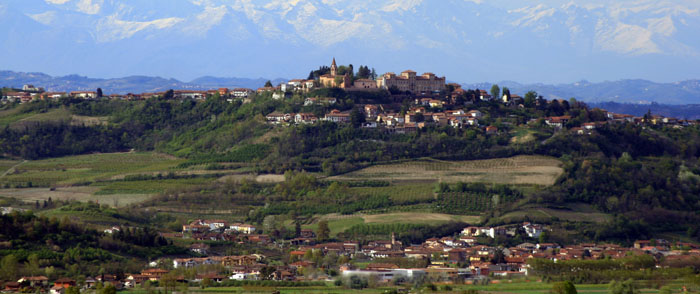

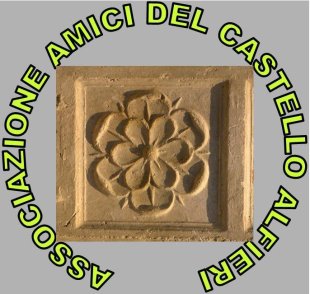
From September 25 to November 7, 2010, in the halls of the west wing of the castle of Magliano Alfieri, was visited by a large audience the retrospective exhibition of the painter Giovanni Rava. 56 works have been exhibited, but thanks to the contacts that occurred during the event, today (January 2011), they were detected around 150. E 'was also carried out an extensive catalog of 88 pages, published by Group Fabiano, Canelli (CN), which, together with the reproduction of paintings and offers some commentary and criticism of texts, written by Antonio Adriano, Giovanna Galante Garrone, Rosanna Maggio Serra and Francesco Sottomano.
The catalog is still available at the Town Hall Magliano (tel. 0173 66117) or at the Cultural Association "Friends of the castle Alfieri"(President Carlo Sacchetto, tel. +39 335 5652312). The event was organized by the Friends of Castle Alfieri and the City of Magliano Alfieri, thanks to contributions from the Province of Cuneo and Fondazione Cassa di Risparmio di Cuneo, cooperating with local promoters Albese some associations, including, in particular, the albesian section of Italia Nostra and Famija Albeisa.
●
«Giovanni Rava was born in Alba by parents of Maglianesi September 14, 1874 and died June 14, 1944 Agliè Canavese.
(…)
A Sant’Antonio of Magliano Alfieri active and spent long summers in her family home in Salina. Many older people here still remember him, thin and a little 'bent, with a wide-brimmed hat and a big umbrella with red stripes, hit the country in search of landscapes and fragments of everyday life. The artist placed the tripod outdoors, where he spent entire afternoons slotting and, sometimes, to finish his paintings from the truth. And so little by little, his paintings are populated with country houses, rural intent of the work in the yard, water the chine of laundresses Bealera and children gambling on the streets and lawns.
(…)
But another aspect of our painter is particularly highlighted in relation to the local community that activity of portraits of commoners and peasants, which made him familiarly quote, artist, and his "citizen teacher" in the culture of the village.
(…)
Rava loved his peasants as those who succeeded in life, sometimes returns to its origins in the "wild native village, " he loved them genuine share their customs, their suffering and their own dialect, which always retained the most outspoken local dialect. And the peasants had already posed for the painting of St. Anthony, kept in the homonymous church, one of his early works Maglianesi, painted in the summer of 1904 in part on the threshing barn and partly on his farm, with the great heat of the painter who was sweating and above models, forced for the occasion in a little summer dresses.
All older people remember that we asked the painter Rava with sympathy. He was a man of good-natured, outgoing, always ready to joke and extravagant: The painters are like pigs, are only valid from the dead, he used to repeat to those who asked him how great was his importance».
[Antonio Adriano, da AA.VV., Gente di Magliano, Bra 1986, pp. 14-15].
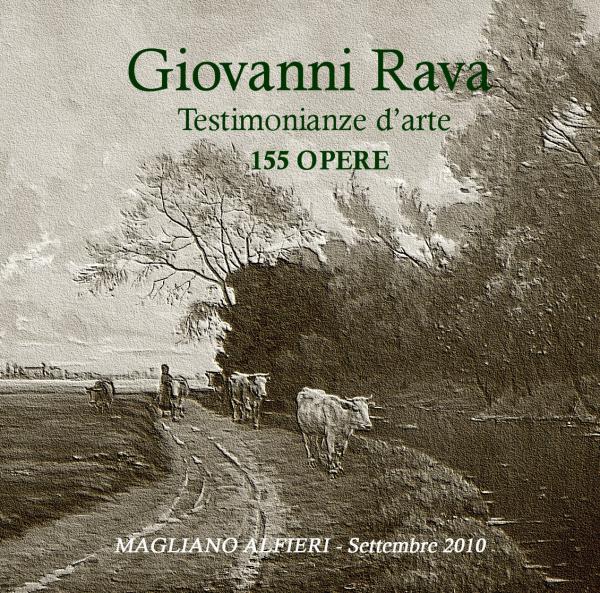
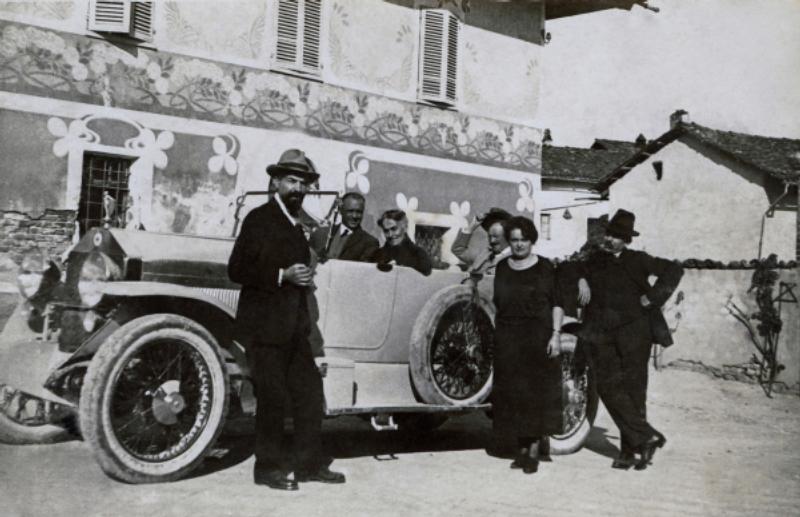
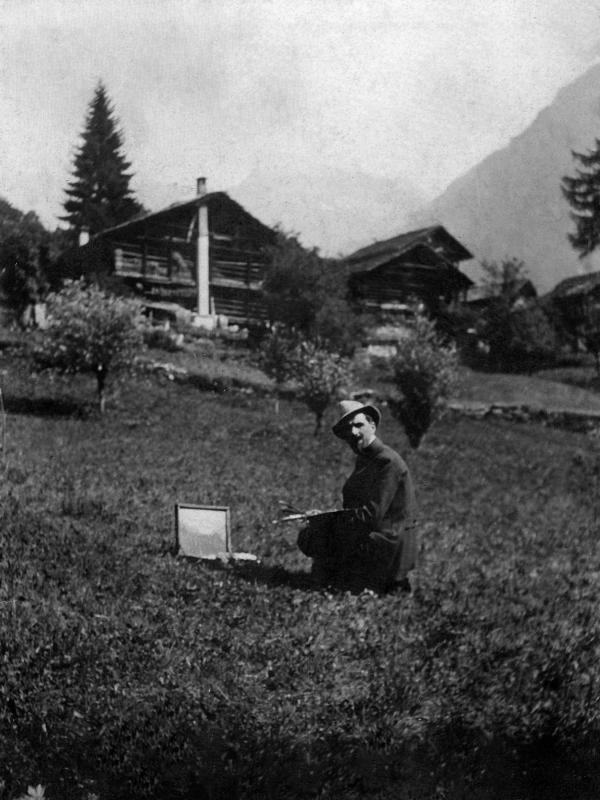
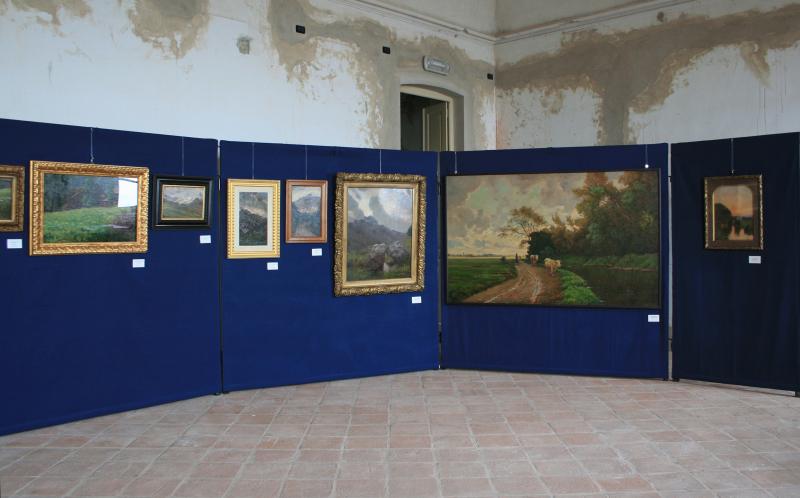
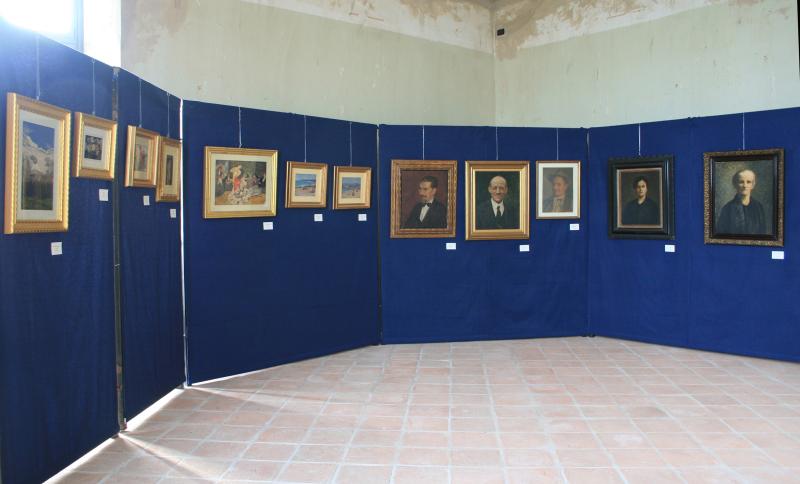
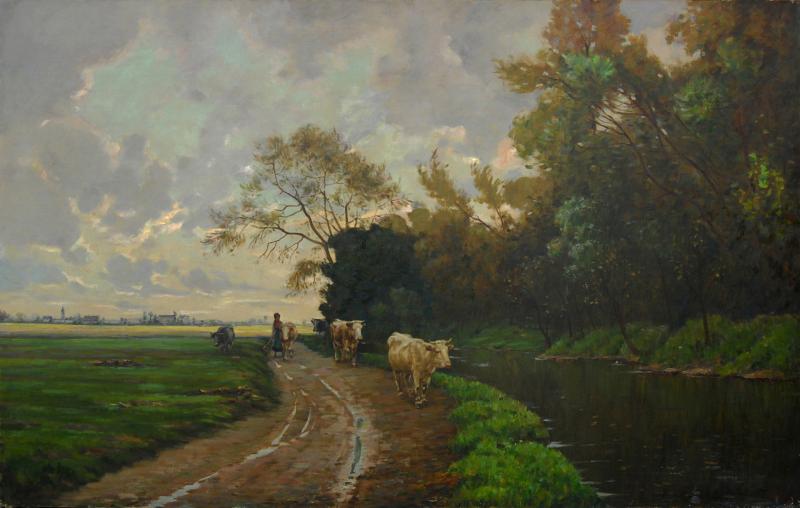
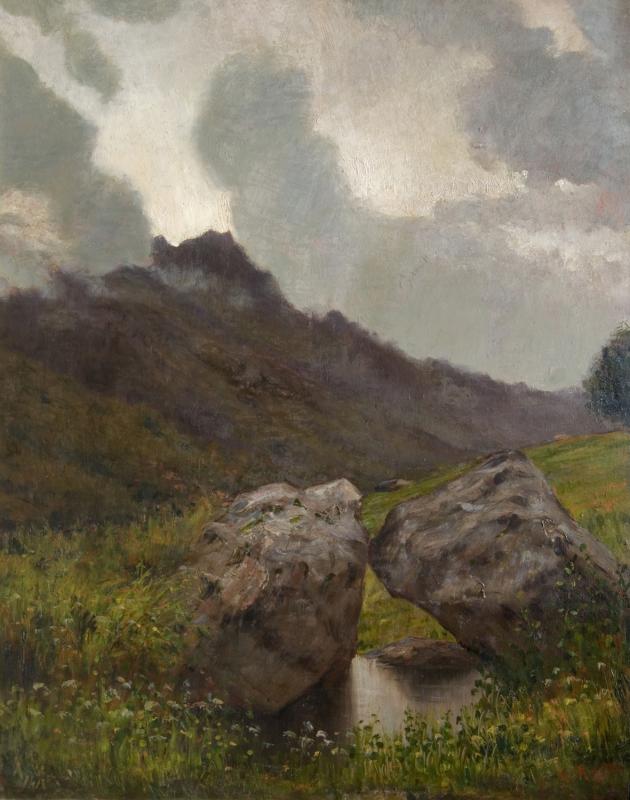
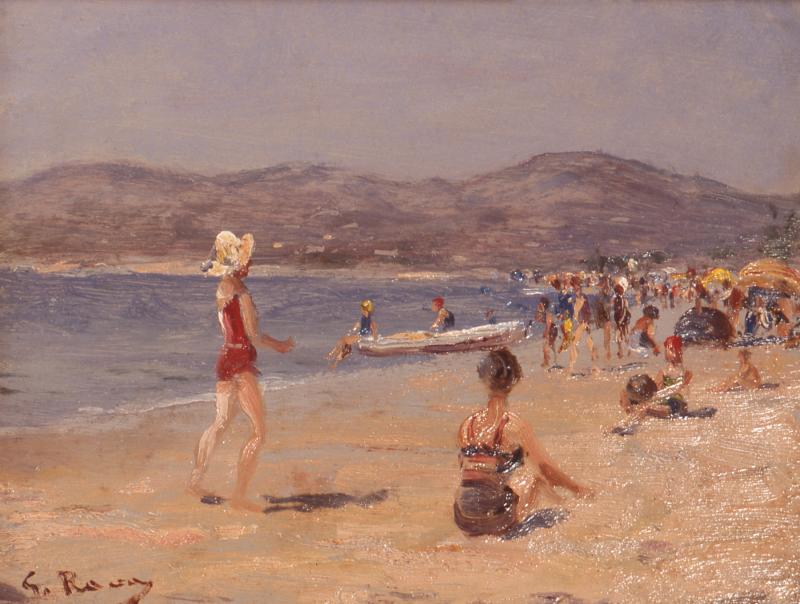
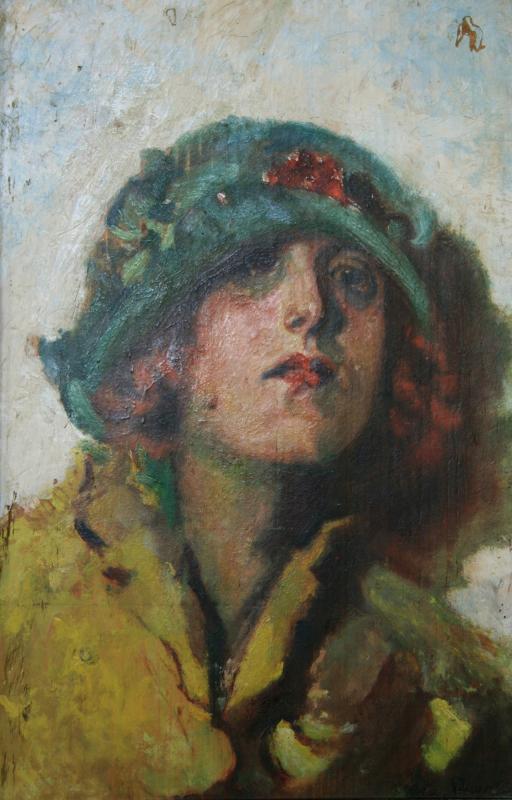
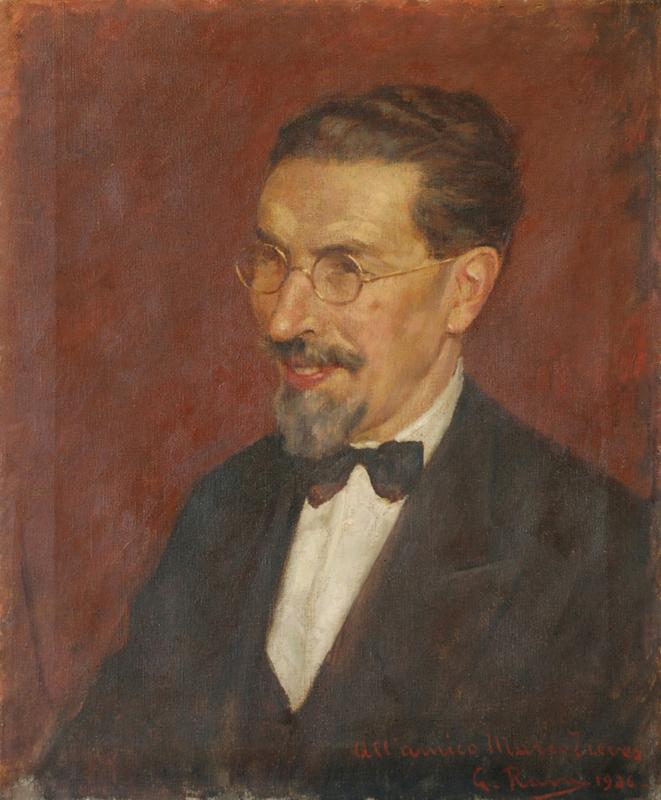
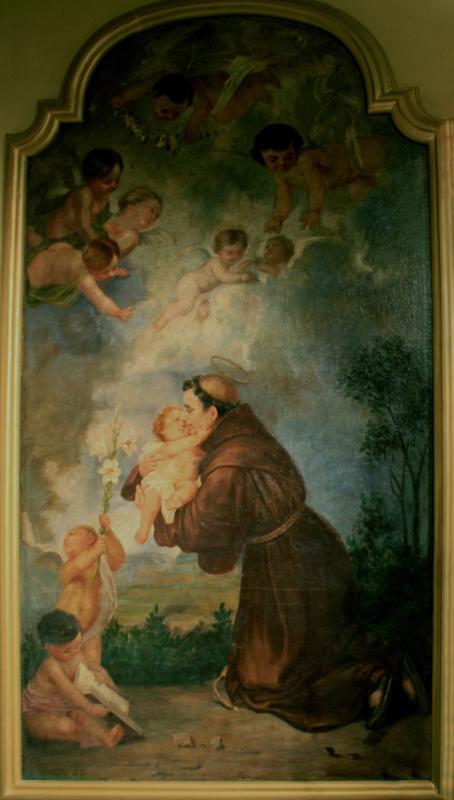

Rava came to the fore at the end of the nineteenth century art, timidly at first with the technique less than the thumbnail, then move on almost immediately to landscape painting. He soon began an activity of professional success, with a production rate of three or four exhibitions a year. In the painting titled Back from the pasture, now at Famija Albeisa, the early twentieth century, is fully present the realism learned from his masters academy Giacomo Grosso and Celestino Gilardi, in the wake of the bucolic feel that had traversed the painting in Piedmont Pittara to Fontanesi. But the subject which became his specialty was the mountain landscape, which in his youth portrayed with majestic prospects precise brushwork and fine, sensitive to the ways of Marco Calderini (The sources of the Po Pian del Re).
Jovial and good company, was well established in the intellectual and social life of Turin and appreciated with sympathy in his homeland, environments, who spoke to him as a portraitist (Girl with hat "to yoke", Marco Treves, "U Giai Scàrun of u "). Available for adventure, he spent 1911 and 1912 in Libya at the time of the colonial war and later (1920-21) traveled once or more in Latin America. go back to the Libyan is drawing intense recollection, or the tablet Women Libyan and canvas One way of Tripoli, where Rava tries to make the unusual lighting conditions of the Mediterranean with more confident stroke. The artist, while staying true to paesismo mountain, later confirmed this choice for a more condensed and concise language, vibrant colourist, to be defined, rather than an "impressionistic", simply "modern. " Indicate been made in this regard several oils in the exhibition, such as Mountain landscape with pine trees, the eye of Brenva, mountain terrace, etc.. and small, tactile paintings fiori.Tuttavia also tried new themes. In 1921 he appeared at the Artists' Club in Turin early paintings inspired by historical city of Alba. And since 1923, these individuals became a common thread, spreading even to the campaign. An issue very pleasing to judge by the many paintings that have come out for this occasion from the houses of Bra, Alba, di Magliano. They are medium-sized paintings depicting corners of the country with some traces of human presence, but never in the foreground, because the protagonist is the site, recognizable, home, loved, and together with the collected light reflected from a painting expert touch , as in tablets Magliano.Bealera in Via Cavour, Channel among the trees at the Tanaro Laundry, View of Murazzano.
Rava proved so responsive to the cultural climate of the times, a true fellow traveler of many Piedmontese painters who were better remembered him, from a Alciati Montezemolo, to be Guarlotti Sobril, Ajmone, Levis, Serralunga and many others. Artists who are gradually recovered from a historiography that does not stop the events always replicated by hand and big shows, but explores the connective tissue of the artistic life, noble and learned the craft of painting that permeated all levels of society and that was sensitive critical readings, awards and commercial success. And as for Rava research has just begun.